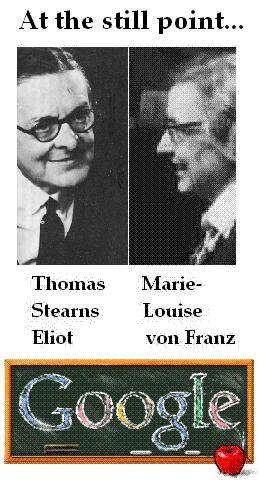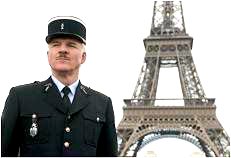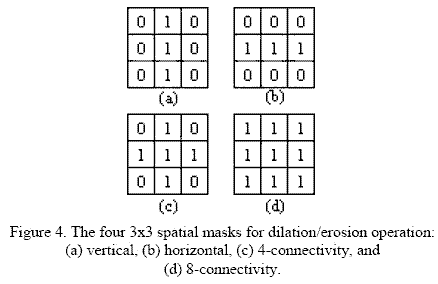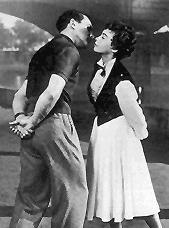Wednesday, February 15, 2006 11:07 AM
Writes Screenplay
About God, Life & Death
These topics may be illuminated
by a study of the Chinese classics.


If we replace the Chinese word "I"
(change, transformation) with the
word "permutation," the relevance
of Western mathematics (which
some might call "the Logos") to
the I Ching ("Changes Classic")
beomes apparent.
Related material:
Hitler's Still Point,
Jung's Imago,
Solomon's Cube,
Geometry of the I Ching,
and Globe Award.
Yesterday's Valentine
may also have some relevance.
Tuesday, February 14, 2006 7:20 AM
-- Charles Rosen, review of The Oxford History of Western Music in the Feb. 23, 2006, New York Review of Books
The first person that comes to mind as fitting both left and right descriptions is T. S. Eliot. Hence the following:

 "They are the same six lines that exist in the I Ching.... Now observe the square more closely: four of the lines are of equal length, the other two are longer.... For this reason symmetry cannot be statically produced and a dance results." -- Marie-Louise von Franz, Number and Time (1970) |
Monday, February 13, 2006 8:00 PM
As yesterday's Lincoln's Birthday entry indicated, my own sympathies are not with the "created equal" crowd. Still, the Catholic Fascism of Franco admirer Andrew Cusack seems somewhat over-the-top. A more thoughtful approach to these matters may be found in a recommendation by Ross Douthat at The American Scene:
Read Eve Tushnet on the virtues of The Man in the High Castle.
Related material: Log24 on Nov. 14, Nov. 15, and Nov. 16, 2003.
Another item of interest from Eve:
"Transubstantiation [is equivalent but not equal to] art (deceptive accident hides truthful substance), as vs. Plato's condemnation of the physical & the fictive? (Geo. Steiner)"
Related material:
(excerpt)
by Father Richard John Neuhaus,
First Things 115 (Aug.-Sept. 2001), 47-56:
"In Grammars of Creation, more than in his 1989 book Real Presences, Steiner acknowledges that his argument rests on inescapably Christian foundations. In fact, he has in the past sometimes written in a strongly anti-Christian vein, while the present book reflects the influence of, among others, Miri Rubin, whose Corpus Christi: The Eucharist in Late Medieval Culture is credited in a footnote. Steiner asserts that, after the Platonisms and Gnosticisms of late antiquity, it is the doctrines of incarnation and transubstantiation that mark 'the disciplining of Western syntax and conceptualization' in philosophy and art. 'Every heading met with in a study of "creation," every nuance of analytic and figural discourse,' he says, derives from incarnation and transubstantiation, 'concepts utterly alien to either Judaic or Hellenic perspectives-- though they did, in a sense, arise from the collisions and commerce between both.'....
The incarnation of God in the Son, the transubstantiation of bread and wine into his body and blood, are 'a mysterium, an articulated, subtly innervated attempt to reason the irrational at the very highest levels of intellectual pressure.' 'Uniquely, perhaps, the hammering out of the teaching of the eucharist compels Western thought to relate the depth of the unconscious and of pre-history with speculative abstractions at the boundaries of logic and of linguistic philosophy.' Later, the 'perhaps' in that claim seems to have disappeared:
At every significant point, Western philosophies of art and Western poetics draw their secular idiom from the substratum of Christological debate. Like no other event in our mental history, the postulate of God's kenosis through Jesus and of the never-ending availability of the Savior in the wafer and wine of the eucharist, conditions not only the development of Western art and rhetoric itself, but at a much deeper level, that of our understanding and reception of the truth of art-- a truth antithetical to the condemnation of the fictive in Plato.
This truth reaches its unrepeated perfection in Dante, says Steiner. In Dante, 'It rounds in glory the investigation of creativity and creation, of divine authorship and human poesis, of the concentric spheres of the aesthetic, the philosophical, and the theological. Now truth and fiction are made one, now imagination is prayer, and Plato's exile of the poets refuted.' In the fashionable critical theories of our day, we witness 'endeavors of the aesthetic to flee from incarnation.' 'It is the old heresies which revive in the models of absence, of negation or erasure, of the deferral of meaning in late-twentieth-century deconstruction. The counter-semantics of the deconstructionist, his refusal to ascribe a stable significance to the sign, are moves familiar to [an earlier] negative theology.' Heidegger's poetics of 'pure immanence' are but one more attempt 'to liberate our experience of sense and of form from the grip of the theophanic.' But, Steiner suggests, attempted flights from the reality of Corpus Christi will not carry the day. 'Two millennia are only a brief moment.'
Sunday, February 12, 2006 12:00 PM
Proposition"... a new nation, conceived in liberty and dedicated to the proposition that all men are created equal"
-- Speech, A. Lincoln, Nov. 19, 1863
Some are less equal than others.
Proof:
Jacques Herbrand, born on this date in 1908.
"Herbrand... worked on field theory, considering abelian extensions of algebraic number fields. In the few months on which he worked on this topic, Herbrand published ten papers. These papers simplify proofs of results by Kronecker, Heinrich Weber, Hilbert, Takagi and Artin. Herbrand also generalised some of the results by these workers in class field theory as well as proving some important new theorems of his own." --MacTutor
See
Saturday, February 11, 2006 8:23 PM
a Dreamcatcher
For "the great Ojibwe tribe"
(A phrase from the lyrics to
"Broken Feather Blues,"
by Pat Donohue,
performed on tonight's
Prairie Home Companion)
Ojibwe dreamcatcher:

 |
 |
See also the recent entries
Zen
Koan and Blue Dream,
as well as
Halloween Meditations
and We Are the Key.
Saturday, February 11, 2006 2:05 PM
Ignorance
Thought for Today:
"What we respect we always do,
but what we do not respect we ignore.'
-- Associated Press, Feb. 11, 2006
From Bloomberg.com:

Saturday, February 11, 2006 12:12 PM
From Dogma Part II: Amores Perros:
"Do Catholics believe that when you die your soul goes up in the
sky? To heaven, if they go to heaven?"
-- Hope of Heaven, by John O'Hara (1938), Carroll &
Graf paperback, 1985, page 162
"My blue dream of being in a basket like a kite held by a rope
against
the wind.... It's fun to stretch and see the blue heavens spreading
once more, spreading azure thighs for adventure."
-- F. Scott Fitzgerald, The Last Tycoon (1941), Collier
paperback, 1986, page 162
The following work of art
illustrates the above remarks.

Friday, February 10, 2006 12:00 PM
From today's Harvard Crimson:
'Tawdry Shleifer Affair'
Stokes Faculty Anger
Toward Summers
A case for Joseph Finder...
or for Steve Martin?

Friday, February 10, 2006 10:08 AM
In memory of Akira Ifukube (pdf), composer of music for "Godzilla," who died on Wednesday, Feb. 8, 2006... birthday of John "Star Wars" Williams--
Thursday, February 9, 2006 9:00 PM

Karen E. Fields, translator's introduction to Elementary Forms of the Religious Life, by Emile Durkheim:
"Durkheim breathed the air of turn-of-the-century Paris, a place that fizzed with experiments in artistic representation, and a time when philosophy, science, and art existed in nothing like today's isolation from one another.24
24 Judith Ryan provides an illuminating account of the links joining physics, psychology, philosophy, painting, and literature in The Vanishing Subject: Early Psychology and Literary Modernism, Chicago, University of Chicago Press, 1991."
And today's Crimson provides an illuminating account of Judith Ryan and (implicitly) forms of the religious life at Harvard.
Thursday, February 9, 2006 12:24 PM
Space, Time, and ScarlettFrom last night's Grammy awards, lyrics performed by Christina Aguilera and Herbie Hancock:
"a place where there's no space or time"Not bad, but as Kat358 noted on May 4, 2005,
-- Leon Russell
For a reference to the place described in Russell's lyrics, see the riff on the number "265" linked to in last night's "Midnight in the Garden of the Soul.""Scarlett Johansson does this 'old Hollywood glam' look much better."
Related material-- Jazz Improvisation:
"Once an appropriate group of people has been assembled, you must decide what to play."
Thursday, February 9, 2006 12:00 AM
of the Soul
(continued)
This time slot, reserved at midnight,
seems to belong to Frank Goodman,
who, according to this morning's
(3 AM) New York Times, was
"one of the last of the old-time
Broadway press agents."
Related material:
Yesterday afternoon's entry
on a fictional "press agent
for 'The Garden of the Soul,'"
and the entry on death
and gardens from Friday,
Feb. 3, 2006, the day
Frank Goodman died.
Wednesday, February 8, 2006 5:11 PM
From A Mass for Lucero:
"To
the two gods of art, Apollo and Dionysus, we owe our recognition
that... there is a tremendous opposition, as regards both origins and
aims, between the Apolline art of the sculptor and the non-visual,
Dionysiac art of music."
-- The Birth of Tragedy, by Friedrich Nietzsche, Penguin, 1993,
page 14
"Melody, then, is both primary and universal." (Author's
italics)
-- Nietzsche, op. cit., page 33
"...in so far as he interprets music in images, he himself lies amidst
the peaceful waves of Apolline contemplation...."
-- Nietzsche, op. cit., page 35
From The Miracle of the Bells, by Russell Janney, Prentice-Hall, 1946, page 333--
"He was singing softly:
'A pretty girl--
is like a melody---- !'
But that was always
Bill Dunnigan's
Song of Victory....
Thus thought the...
press agent for
'The Garden of the Soul.'"
Wednesday, February 8, 2006 12:00 PM
(continued)
"... iconography,
the concept and image
of the bride of Christ--
the sponsa Christi--
assumed particular relevance in
the definition of women's identity."
-- Silvia Evangelisti in
Historiographical Reviews

Related material:
|
Arts & Letters Daily
(Feb. 8, 2006) annotated: Dan Brown is not the first to have suggested that Jesus had a
sex
life-- even Martin Luther said it. So what about the lady, Mary
Magdalene?... more "In 'The Little Mermaid,' Ariel's true identity is the 'Lost Bride,' the Magdalene."
For
literature profs of today, Theory is what the Dialectic was to Marxist
intellectuals of the past: the key to almost everything... more "Contemporary literary theory did not emerge in an intellectual and cultural vacuum. The subordination of art to argument and ideas has been a long time in the works. In The Painted Word, a rumination on the state of American painting in the 1970s, Tom Wolfe described an epiphany he had one Sunday morning while reading an article in the New York Times on an exhibit at Yale University. To appreciate contemporary art-- the paintings of Jackson Pollack and still more so his followers-- which to the naked eye appeared indistinguishable from kindergarten splatterings and which provided little immediate pleasure or illumination, it was 'crucial,' Wolfe realized, to have a 'persuasive theory,' a prefabricated conceptual lens to make sense of the work and bring into focus the artist's point. From there it was just a short step to the belief that the critic who supplies the theories is the equal, if not the superior, of the artist who creates the painting." The
idea that anyone, regardless of learning or class, could "come to
Christ" went along with the idea of equal rights in America. William
Jennings Bryan... more "... evangelical Protestantism has always been an integral part of American political history." |
And from non-Protestantism, for the birthday of
Sanctus from Missa "Veni Sponsa Christi" (pdf), by Manuel Cardoso (1566-1650).
Related material: Catholic Tastes and
A Mass for Lucero.
Tuesday, February 7, 2006 4:00 PM
Today's birthdays:E. T. Bell and G. H. Hardy.
I added a paragraph today to the diamond theorem page:
"Some of the patterns resulting from the action of G on D have been known for thousands of years. (See Jablan, Symmetry and Ornament, Ch. 2.6.) It is perhaps surprising that the patterns' interrelationships and symmetries can be explained fully only by using mathematics discovered just recently (relative to the patterns' age)-- in particular, the theory of automorphism groups of finite geometries."
This blend of mathematical history and mathematics proper seems not inappropriate for a birth date shared by a mathematical historian (Bell) and a pure mathematician (Hardy).
Monday, February 6, 2006 10:00 AM
are brought together the diamonds
inside of them will glow."
-- Harrison Ford in
"Indiana Jones and the
Temple of Doom"
In today's online New York Times:
(1) A review of pop-archaeology TV,
"Digging for the Truth,"
(2) a Sunday news story,
"Looking for the Lie,"
(3) and a profile,
"Storyteller in the Family."
"The season premiere 'Digging for the Truth: The Real Temple of Doom,' showed Mr. Bernstein in South America, exploring tunnels...."
From (2):
"... scientists are building a cognitive theory of deception to show what lying looks like...."
From (3):
"I did feel one had to get not just the facts, but the emotional underpinnings."
Log24 on
Harrison Ford's birthday
last July--

-- and Mathematics and Narrative.
See also Saturday's entry,
Raiders of the Lost Matrix,
for logic as an aid in
detecting lies.
Sunday, February 5, 2006 9:00 PM
"The icon that I use... is the nine-fold square.... This is the garden of Apollo, the field of Reason...."
-- Architect's notes on the design of a college campus
"Binary image morphological operations are well suited to a large class of basic image processing applications. These operations include image analysis tasks such as shape recognition, image segmentation, noise reduction, and feature extraction."

-- A Programmable Logic-based Implementation of Ultra-fast Parallel Binary Image Morphological Operations (pdf), by Kenneth G. Ricks et al., ISCA 18th International Conference on Computers and Their Applications (March 2003)
Sunday, February 5, 2006 11:00 AM
Catholic Schools SermonFor those who might be tempted today, following yesterday's conclusion of Catholic Schools Week, to sing (for whatever reason) "Ding Dong, the Witch is Dead"--
Here, from his classic Witchcraft (first published by Faber and Faber, London, 1941, reprinted by Apocryphile Press, Berkeley, CA, Oct. 1, 2005) is Charles Williams on the strong resemblance between witchcraft and the rituals of the Church:
Witchcraft and the Church
From Witchcraft, 2005 Apocryphile edition, pages 77-80--
[77] ... The predisposition towards the idea of magic might be said to begin with a moment which seems to be of fairly common experience-- the moment when it seems that anything might turn into anything else. We have grown used-- and properly used-- to regarding this sensation invalid because, on the whole, things do not turn into other things except by processes which we realize, or else at least so frequently that we appreciate the probability. But the occasional sensation remains. A room, a street, a field becomes unsure. The edge of a possibility of utter alteration intrudes. A door, untouched, might close; a picture might walk; a tree might speak; an animal might not be an animal; a man might not be a man. One may be with a friend, and a terror will take one even while his admirable voice is speaking; one will be with a lover and the hand will become a different and terrifying thing, moving in one's own like a malicious intruder, too real for anything but fear. All this may be due to racial memories or to any other cause; the point is that it exists. It exists and can be communicated; it can even be shared. There is, in our human centre, a heart-gripping fear of irrational change, of perilous and malevolent change.
Secondly, there is the human body, and the movements of the human body. Even now, when, as a general rule, the human body is not supposed to mean [78] anything, there are moments when it seems, in spite of ourselves, packed with significance. This sensation is almost exactly the opposite of the last. There, one was aware that any phenomenon might alter into another and truer self. Here, one is aware that a phenomenon, being wholly itself, is laden with universal meaning. A hand lighting a cigarette is the explanation of everything; a foot stepping from a train is the rock of all existence. If the first group of sensations are due to racial fear, I do not know to what the second group are due-- unless indeed to the Mercy of God, who has not left us without a cloud of witnesses. But intellectually they are both as valid or invalid as each other; any distinction must be a matter of choice. And they justify each other, at least to this extent, that (although the first suggests irrationality and the second rationality) they both at first overthrow a simple trust that phenomena are what phenomena seem.
But if the human body is capable of seeming so, so are the controlled movements of the human body-- ritual movements, or rather movements that seem like ritual. A finger pointing is quite capable of seeming not only a significant finger, but a ritual finger; an evocative finger; not only a finger of meaning, but a finger of magic. Two light dancing steps by a girl may (if one is in that state) appear to be what all the Schoolmen were trying to express; they are (only one cannot quite catch it) an intellectual statement of beatitude. But two quiet steps by an old man may seem like the very speech of hell. Or the other way round. Youth and age have nothing to do with it, nor did the ages that defined and [79] denounced witchcraft think so. The youngest witch, it is said, that was ever burned was a girl of eleven years old.
Ordered movement, ritual, is natural to men. But some ages are better at it, are more used to it, and more sensitive to it, than others. The Middle Ages liked great spectacle, and therefore (if for no other reasons-- but there were many) they liked ritual. They were nourished by ritual-- the Eucharist exhibited it. They made love by ritual-- the convention of courtly love preserved it. Certainly also they did all these things without ritual-- but ritual (outside the inner experience) was the norm. And ritual maintains and increases that natural sense of the significance of movement. And, of course, of formulae, of words.
The value of formulae was asserted to be very high. The whole religious life 'as generally necessary to salvation' depended on formulae. The High God had submitted himself to formulae. He sent his graces. He came Himself, according to ritual movements and ritual formulae. Words controlled the God. All generations who have believed in God have believed that He will come on interior prayer; not all that He will come, if not visibly yet in visible sacraments, on exterior incantation. But so it was. Water and a Triune formula concentrated grace; so did oil and other formulae; so-- supremely-- did bread and wine and yet other formulae. Invocations of saints were assumed, if less explicitly guaranteed, to be effective. The corollaries of the Incarnation had spread, in word and gesture, very far.
The sense of alteration, the sense of meaning, the [80] evocation of power, the expectation of the God, lay all about the world. The whole movement of the Church had, in its rituals, a remarkable similarity to the other rites it denounced. But the other rites had been there first, both in the Empire and outside the Empire. In many cases the Church turned them to its own purposes. But also in many cases it entirely failed to turn them to its own purposes. In many cases it adopted statues and shrines. But in others it was adopted by, at least, the less serious spells and incantations. Wells and trees were dedicated to saints. But the offerings at many wells and trees were to something other than the saint; had it not been so they would not have been, as we find they often were, forbidden. Within this double and intertwined life existed those other capacities, of which we know more now, but of which we still know little-- clairvoyance, clairaudience, foresight, telepathy.
Sunday, February 5, 2006 10:31 AM
Review:Halloween Meditations
Sunday, February 5, 2006 10:30 AM
Review:Recommended Reading
for Hogwarts Students on Devil's Night
Saturday, February 4, 2006 10:00 AM
the Lost Matrix
(continued)
|
The Archaeologist
with a Thousand Faces "From often humble beginnings, and often with a childhood fascination for antiquity, the archaeologist leaves familiar surroundings to undergo exacting professional training under a series of mentors and when armed, at last, with the intellectual weapons of the profession, sets off for unfamiliar or exotic realms, braving opposition and danger to solve an ancient mystery. The lives of... real-life archaeologists... have lent themselves to this style of retelling... as have such fictional heroes as John Cullinane (Michener 1965) and Indiana Jones." -- From "Promised Lands and Chosen Peoples: The Politics and Poetics of Archaeological Narrative," by Neil Asher Silberman, pp. 249-262 in Nationalism, Politics, and the Practice of Archaeology, edited by Philip L. Kohl and Clare Fawcett, Cambridge University Press, paperback, published Feb. 8, 1996. |
From Today in History,
by the Associated Press:
Thought for Today:
"Character consists of what you do
on the third and fourth tries."
-- James Michener,
American author (1907-1997),
attributed by
Simpson's Contemporary Quotations
to Chesapeake, Random House, 78.
The Matrix:

On Linguistic Creation
June 25, 1999
Second try:
Art Wars: Picasso's Birthday,
Oct. 25, 2002
Third try:
Matrix of the Death God,
May 25, 2003
Fourth try:
Happy Birthday,
July 26, 2004
Friday, February 3, 2006 11:00 AM

"At the still point..."
Related material:
Log 24, Sunday, January 29, 2006,
and links in the previous entry--
A Contrapuntal Theme and
Good Will Writing.
|
Beauty is momentary in the mind-- The body dies; the body's beauty lives. -- Wallace Stevens, |
Thursday, February 2, 2006 7:00 PM
In memory of
Christopher James Makins,
2nd Baron Sherfield,
Fellow of All Souls:

Related material:
Good Will Writing,
A Contrapuntal Theme,
Ideas, Stories, Values,
as well as
Toot! Toot! Off we go!
Thursday, February 2, 2006 9:29 AM
Thursday, February 2, 2006 9:00 AM
From today's New York Times,
"Frey Says Falsehoods Improved His Tale"--
"Overall, his portrayal in A Million Little Pieces is of a person who 'I created in my mind to help me cope' with drug addiction and recovery. He said most of the invented material 'portrayed me in ways that made me tougher and more daring and more aggressive than in reality I was, or I am.'"
A not uncommon strategy.
Related material:
Wednesday, February 1, 2006 2:22 PM

See also
Russell Crowe as Santa's helper,
Communion, and the subsequent
Playing God: The Color of Collateral.
From "Collateral"--
FELIX: Do you believe
in Humpty Dumpty?
MAX: No.
FELIX: Do you believe
in Santa Claus?
MAX: No.
FELIX: Neither do I.
But my children do.
They are still small.
But do you know who they like
even better than Santa Claus?
His helper, Pedro Negro. Black Peter.
There's an old Mexican tale that tells
of how Santa Claus got so very busy
looking out for the good children
that he had to hire some help
to look out for the bad children.
So he hired Pedro.
And Santa Claus gave him a list....

Wednesday, February 1, 2006 9:49 AM
"Good Night and Good
Luck"
-- Morgan Freeman, closing
remarks
at the Screen Actors Guild Awards
on January 29, 2006
 A History of Death |
 |
Review by Stephen Hunter
of "Good Night and Good Luck"--
"The film, therefore, is like
a child's view of these events,
untroubled by complexity,
hungry for myth and simplicity."
"A larger poem for a larger
audience....
A mythological form, a festival sphere,
A great bosom, beard and being,
alive with age."
-- Wallace Stevens, quoted in
Log24, January 29, 2006

Stephen Hunter on Senator McCarthy:
He "forever tarnishedby association the reputations
of the security services
charged with keeping us safe
from the actual--
yes, Virginia, there was
such a thing-- Red menace."






